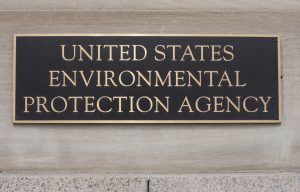Over time, New York’s courts have erected multiple barriers to policyholders seeking to recover insurance for long-tail, progressive injury claims—such as environmental or asbestos liabilities—that can implicate multiple policies over multiple policy terms. Now, in a New York minute, just weeks after hearing oral argument, the Empire State’s highest court leveled the playing field by endorsing the “all sums” and “vertical exhaustion” approach to allocation advocated by a policyholder, at least as to policies containing “non-cumulation” and “prior insurance” provisions.

In In re Viking Pump, Inc., New York’s Court of Appeals did not overrule its 2002 decision in Consolidated Edison Co. of New York v. Allstate Ins. Co., which had applied pro rata allocation where the non-cumulation clause argument was not raised, but the court made clear that pro rata allocation is not the default rule in New York. Rather, the specific wording of the triggered policies will control, and can require allocation on an all-sums basis. This is a huge win for policyholders with New York liabilities and a further endorsement, by a prestigious court, of the “all sums” approach to allocation.
Continue Reading ›
 Policyholder Pulse
Policyholder Pulse



 Thus, it is imperative that contractors have the right pollution coverage in place to remain secure and profitable.
Thus, it is imperative that contractors have the right pollution coverage in place to remain secure and profitable. insured,” to require collection of the full amount of primary polices in order to exhaust them. The Zeig court emphasized that a compromise payment by the primary insurer discharges the limits of the primary coverage, while the excess insurer is unharmed, since it must pay only the amount exceeding the attachment point of its policy.
insured,” to require collection of the full amount of primary polices in order to exhaust them. The Zeig court emphasized that a compromise payment by the primary insurer discharges the limits of the primary coverage, while the excess insurer is unharmed, since it must pay only the amount exceeding the attachment point of its policy. The particular information request at issue in Ash Grove Cement is known as a “104(e) letter,” which is issued by the EPA under section 104(e) of the Comprehensive Environmental Response, Compensation and Liability Act of 1980 (CERCLA). As companies that have owned or operated a contaminated site know from experience, a 104(e) letter or a similar request under state environmental law typically is the first step in a regulatory enforcement process under which they face strict and retroactive liability for the costs of investigating and cleaning up the site. The ruling in Ash Grove Cement means that defense cost coverage begins at this critical juncture and continues until site investigation and cleanup is completed.
The particular information request at issue in Ash Grove Cement is known as a “104(e) letter,” which is issued by the EPA under section 104(e) of the Comprehensive Environmental Response, Compensation and Liability Act of 1980 (CERCLA). As companies that have owned or operated a contaminated site know from experience, a 104(e) letter or a similar request under state environmental law typically is the first step in a regulatory enforcement process under which they face strict and retroactive liability for the costs of investigating and cleaning up the site. The ruling in Ash Grove Cement means that defense cost coverage begins at this critical juncture and continues until site investigation and cleanup is completed.
 . In addition, having such insurance often assists companies facing the challenge of an extensive and prolonged Superfund cleanup. Many courts have ruled that the receipt of a Superfund Notice Letter from EPA triggers the responsibility of the insurer to provide the coverage in the policy.
. In addition, having such insurance often assists companies facing the challenge of an extensive and prolonged Superfund cleanup. Many courts have ruled that the receipt of a Superfund Notice Letter from EPA triggers the responsibility of the insurer to provide the coverage in the policy.